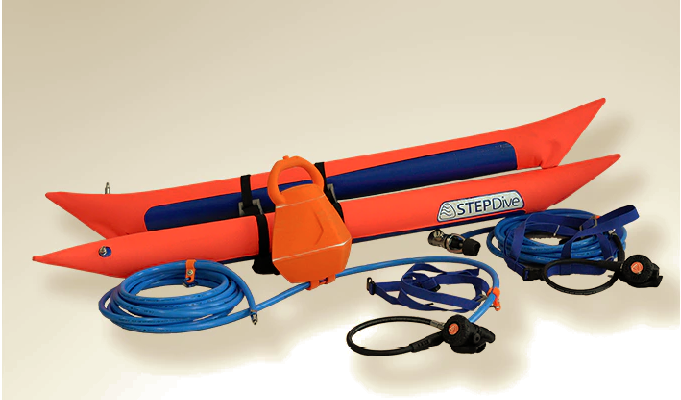The Premise. If you’ve ever tried to get yourself out of a wetsuit after a day at the beach, chances are you know that it’s not quite as easy as it looks. It’s an awkward task to take on, especially when you get down to the legs of the suit. For those who spend a lot of time in the water, this can be a nuisance standing between you and the next part of your fun day outdoors.
The Product. Laura Taylor of Galway, Ireland has created what she’s calling the world’s first patented wetsuit removal tool, and while it’s not the most attractive-looking thing in the world, it appears to work quite well. Essentially a foot long metal “gripper” with a plastic handle and head, the Off’n’Up works by running the shoehorn-like product against your leg, during which the plastic piece grabs the wetsuit material and pulls it down to your feet. The project’s campaign page states that there’s no other product like it on the market, and it is indeed hard to find anything similar out there. It not only lets you remove the wetsuit efficiently, but while standing. And as a bonus, it can also double as a hanger for the wetsuit.
The Pitch. The campaign video starts off by having a young man flail around on the ground demonstrating just how difficult it is to get out of a wetsuit after being in the water. This is followed by the company’s founder speaking about the history of the product. The description accurately walks the viewer through how to use the product, but the tone fails to really capture much excitement associated not only with the fun activities one can engage in while in a wetsuit, but the opportunity to get on with things after one is out of one.
The Perks. Early adopters of the Off’n’Up can do so for an entry price of $50 (the prototypes will be shipping in July). Considering that the Off’n’Up may find daily use with some people, the price itself is manageable, if a bit high. For those who only wear a wetsuit on occasion, however, it’s difficult to justify making such a purchase. Other perks (guided adventures with the founder, for example) are offered at much higher prices, with a five-day Ireland adventure for 2 clocking in at just under $900.
The Potential. There’s really nothing out on the market that serves the same purpose as the Off’n’Up, but it’s a bit pricey for such a limited-use product. Even among those who wear wetsuits often enough to find a strong need for it would likely find it an awkward implement to bring along. A collapsible version, though, would be a more compelling option for separating a wetsuit — and some funds — from a prospective buyer.
 To help, the team at SnorkelDive Innovations designed the STEPDive, a lightweight and highly portable diving system for new and advanced users alike. The system is comprised of three parts: a base station raft that holds an oxygen tank and sports a deck and cargo net to hold gear, a floating depth control unit and a range control clip that controls how far an attached diver can go. Together, the system allows for a step-by-step SCUBA learning experience that eases newcomers into basic diving techniques and good habits and allows advanced divers to go along.
To help, the team at SnorkelDive Innovations designed the STEPDive, a lightweight and highly portable diving system for new and advanced users alike. The system is comprised of three parts: a base station raft that holds an oxygen tank and sports a deck and cargo net to hold gear, a floating depth control unit and a range control clip that controls how far an attached diver can go. Together, the system allows for a step-by-step SCUBA learning experience that eases newcomers into basic diving techniques and good habits and allows advanced divers to go along.
 Witnessing the aquatic nature underneath lapping island waves is an activity imbued with wonder. But while it’s easy to marvel wonder at the unique, vibrant underwater life teeming below, it can be a little uncomfortable having to wear huge tanks with a limited supply of oxygen to explore.
Witnessing the aquatic nature underneath lapping island waves is an activity imbued with wonder. But while it’s easy to marvel wonder at the unique, vibrant underwater life teeming below, it can be a little uncomfortable having to wear huge tanks with a limited supply of oxygen to explore.